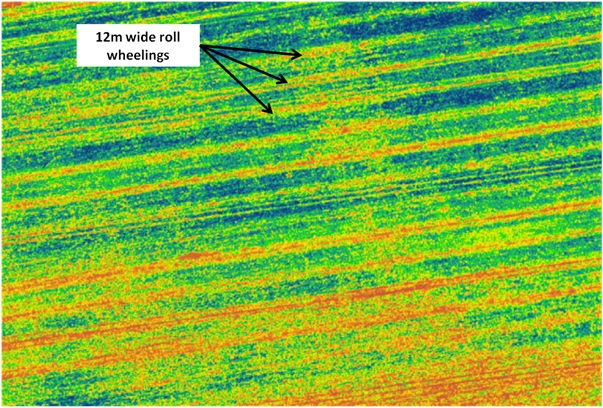High res imagery; allowing innovation and intervention
Remote sensing in agriculture is nothing new. However, with drones gaining more publicity over the last few years, some would argue it has felt somewhat revolutionary all over again.
Rather than new sensors, what actually came along were new platforms and all too often it is only these that get the attention. We're all made aware when the latest service is attached to a satellite, plane, drone or machine but is there ever a real focus on what the actual output is?
The difference between the platforms is a function of output and resolution. Quite simply, with any given technology, the further away you are the wider the area you can see but the detail suffers as a result. A satellite can cover most of the UK in one hit but it will have much lower resolution than a drone that can look at a particular part of a field.
At Frontier, we need to balance this by providing innovation to our customers as well as the output scale that makes an approach or service practical.
Our research
Over the last few years, through our team at SOYL we have been revisiting sensors that are mounted on planes. I say revisited because the first time we looked at this platform was over 20 years ago! The reason this platform is important is because it gives us the output volumes we need, together with the detail too. Compared to 20 years ago, the sensors have vastly improved and the acquisition cost (flying) has reduced too. Not only can they help with variable rate nitrogen applications, several other areas of the farm business can also benefit.
In the past two years, in partnership with Spectrum Aviation, we have also been evaluating whether the industry needs the detail that this platform can provide. Variable rate nitrogen, plant growth regulators and biomass can all be delivered by existing systems, so what can the finer, detailed imagery contribute to the farm? How can it help to improve farm management or agronomy? Whilst it is exciting to see the first image that clearly shows the cleat on the tractor tyre in the tramline, or individual plants in the field, where is the value?
Our assessment of this technique shows that the value becomes evident during the early part of the season; pre-Christmas. The resolution enables us to gather data at a very early stage in crop development and this gives us a fundamental layer to include in our agronomy service by:
- Quantifying the extent of crop establishment and emergence
- Showing early season variation in the crop. This variation will persist right through to harvest unless managed accordingly. It can be the driver for the first dose of variable rate nitrogen in the spring, autumn PGRs at the other extreme, or biostimulant applications
- Demonstrating the value of good soil management
- Giving insight into whether variation is due to crop performance or related to differences from when the crop emerged. We can then make informed decisions based on variation images later in the year
- Offering an instant view of areas that may require further investigation. Often it is impossible to make this judgement from the ground
- Quantifying crop cover; enabling decisions on whether to keep a crop in the ground or not. Of course, this is never a great decision to have to make but we all come across it at one time or another sadly. The benefit is knowing that the decision you make is the right one for your business
- Providing a metric to alter variable rate seeding establishment layers for the future.
There is greater value to be derived from this higher resolution imagery than that which is currently available from commonly used satellite imagery. It allows us early insight and intervention in crop development and, as such, we will be extending our trials into a beta-product for autumn 2019. This will be available for all of our agronomy and precision farming customers. If you are interested in being part of this next stage of learning, please get in touch with your usual Frontier contact to discuss further.
As a subscriber, you’ll receive email alerts each time a new blog is published so you can always stay updated with the latest advice and insights from our experts





Comments